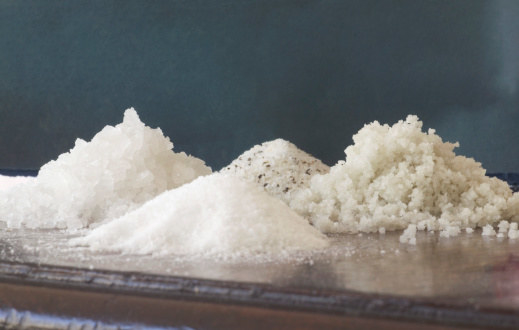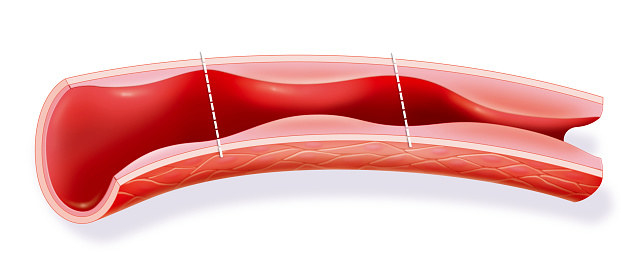 |
| Advertisement |
Over a third of breads have too much salt, according to a new study. Here’s what that could mean for your health.
When you think of salty foods, bread might not come to mind. But a new study shows that it may be a bigger contributor to sodium in your diet than you think.

Maximilian Stock Ltd. / Getty Images / Via GettyImages-126553309
Even though it doesn't taste that salty, bread might be delivering more sodium than you think — but it all depends on which kind you eat and how much, according to a new study.
Researchers analyzed 2,000 different breads (including white, wholemeal, mixed grain, and flatbreads) sold in 32 countries around the world and found some shockingly high numbers and wide variation in the salt and sodium levels in breads. The study was conducted by the World Action on Salt & Health (WASH) at the Wolfson Institute of Preventive Medicine of Queen Mary University of London.
Overall, a third of breads surveyed had more salt than UK's maximum recommended amount for bread.
In the US, the upper daily limit for sodium is 2300 mg, and it’s ideal to eat no more than 1500 mg of sodium a day, according to the American Heart Association. That’s similar to the upper limit of 2000 mg recommended by the World Health Organization (WHO). (One teaspoon of salt contains 2300 mg of sodium.)
In the report, some breads had over 1000 mg of sodium in a serving size of 100g, which is about two slices, depending on the bread type.
"We decided to look at bread because it's an important staple food in diets worldwide, so people are eating quite a lot of bread on a day-to-day basis without realizing it's one of the biggest contributors to salt in our diet because it doesn't taste very salty," said Mhairi Brown, the study coordinator and a nutritionist at WASH.
The saltiest bread was a rosemary focaccia from a popular brand in Canada.

Philip Wilkins / Getty Images / Via gettyimages.com
The rosemary focaccia from Ace Bakery in Canada had 1060 mg of salt per 100 g of the bread. That’s pretty salty.
In comparison, an 8-ounce bag of potato chips has 1192 mg sodium; a large order of McDonald’s fries has 350 mg, and one cup of salted, dry-roasted nuts has 916 mg.
In the US, some of the saltiest breads they looked at were Grissom’s Mill Round Top White Enriched bread, which had 658.5 mg of sodium per 100g, Old Tyme "100% Whole Grain Bread" from Schmidt, which had 600 mg of sodium per 100g and Pepperidge Farm's "Hearty Sliced White Bread,” which had 558 mg per 100g.
Flatbreads and wholemeal breads tended to be the saltiest of all the bread categories, and mixed grain breads had the lowest sodium content, but there was still considerable variation within each category.
Salt is added to bread during the manufacturing process for taste and also for shape, texture, and preservation.

Danielle Leavell / Getty Images / Via gettyimages.com
When you eat a bag of chips, you can usually taste the salt covering the outside of the chip because it hits your taste buds. But with bread, you can't necessarily taste how salty it is because a lot of that salt was added before baking, so it's mixed in and disguised by other things like sugar, Brown told BuzzFeed News.
But just because the salt isn't as easy to taste doesn't mean it's not there. "Salt is added during the manufacturing process not just for taste but also because it helps with the structure of the bread, shape, texture, and it prolongs the shelf life... but you don't need as much as they're adding," Brown said.
So the aim is to add less salt to bread so it contributes less sodium to the diet, but not remove it entirely. That being said, getting the food industry to do this is easier said than done, the experts said. "Companies are reluctant to take salt out because they worry people won't like it or that the bread wouldn't have the same shape or structure," Brown said.
Consuming high levels of sodium over time can increase the risk of high blood pressure, particularly in people who are sensitive to the effects of sodium. High blood pressure can lead to heart attacks and strokes.

Universal Images Group / Getty Images / Via gettyimages.com
Sodium is an essential nutrient, so we do need some of it to survive. It helps the body maintain fluid balance and send nerve impulses for muscle function. However, eating too much salt can take a toll on the body.
The average American consumes 3500 mg of sodium per day, said Jo Ann Carson, chair of the American Heart Association (AHA) Nutrition Committee, and that’s too much. The extra sodium an increase the volume of blood flowing through blood vessels and raise your blood pressure.
High blood pressure forces the heart and blood vessels to work harder, which can weaken them over time. Hypertension (long-term high blood pressure) can lead to heart failure, Carson explained. Heart failure is a chronic condition where the heart is weak and enlarged, and struggles to pump enough blood to the body.
The good news is that you can control the amount of sodium in your diet and cutting back tends to be good for your blood pressure and heart in the long-term. "Our blood pressure increases over our lifetime so it's important to start being careful about salt intake earlier in life then keep it low so it takes much longer for it to reach a dangerously high level," Carson said.
The study also showed that there was a lot of variation in the salt levels between breads, so you can choose a lower sodium option.

Jeff Greenberg / Getty Images / Via gettyimages.com
"We saw almost a three-fold difference in the levels of salt between each bread within one type," Brown said. If you're buying white bread, for example, you can pick the one with less salt and it probably won't taste that different. "It's always important to pick the lower sodium option, especially if you are feeding kids because their daily recommended salt intake is even lower," Brown said.
So pay attention to nutrition labels on bread packages and choose the one with a lower or the lowest amount of sodium per serving. When choosing between types of breads, you might have to make trade-offs. "A whole grain bread might have a little more salt, but it's also good to get whole grains," Carson said.
There's no hard number, but if you know your daily limit is, say, no more than 2200 mg, you would want a bread with less than 200 mg of sodium per two slices. You can also look for breads with the AHA "heart check" on its packaging, which means there's a reasonable amount of sodium and the product is certified as heart-healthy, Carson explained.
Bread is an easy place to start cutting back on your sodium and even if the low-sodium option doesn't taste the same at first, you will get used to it. "Just as we have become accustomed to higher amounts of salt in our diet, we can adapt to lower amounts of salt. It takes about a month for your taste buds to adapt," Carson said. (Here are more tips for cutting down on the salt).
Universal Images Group / Getty Images


0 comments: